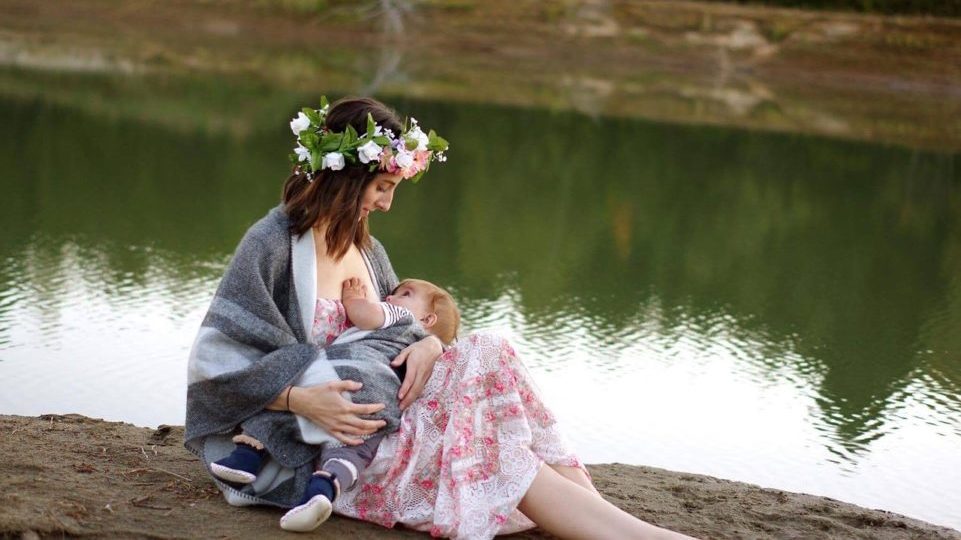
World Breastfeeding Week is definitely worth universally celebrating -and promoting! – as a key factor for human health and wellbeing
The 2020 theme, ‘Breastfeeding for a Healthier Planet’, links infant feeding with ecology.
Breastfeeding is linked to all 17 of the United Nations Sustainable Development Goals not only because it makes good basic economic sense, but also because it confers strong immunity and with it, a cascade of long term benefits and life choices.

Since the beginning of the current pandemic, the World Health Organization (WHO) has recommended early skin-to-skin contact and breastfeeding for babies of mothers who are COVID-19 positive,based on the low risk of transmission of COVID-19 infection to newborns vs. the high risks associated with not breastfeeding and of separation of mother and baby (ref1).
This was controversial until 22nd July when the authoritative Association of American Pediatrics, after a review of all available evidence, recommended that mothers with confirmed or suspected COVID-19 and their well newborns could room-in and breastfeed. (Ref2)
Breast Care
At Birthlight, we have campaigned for a non-judgmental attitude and indiscriminate support of bottle-feeding mothers in postnatal and mother&baby yoga classes. Our aim however is to encourage breastfeeding from pregnancy through practices of breast preparation drawn from both Ayurveda and the Amazonian indigenous traditions of care. ‘Toughening’ my nipples while pregnant was a daily ‘must do’ that the older women supervised carefully as part of my antenatal education. Proactively, breasts and nipples can be ‘readied’ to facilitate the onset of breastfeeding, reduce soreness in early days and weeks and prevent or stop mastitis. This works! So why don’t we do it?
[embeddoc url=”https://birthlight.com/wp-content/uploads/2020/08/birthlight-prenatal-breastcare.pdf” download=”all” viewer=”google”]After birth, yoga adds breast awareness and ‘instant relaxation’ to Breastfeeding. While many breastfeeding resources point to the importance of a comfortable aligned posture and adequate baby support for feeding, it is not so easy to work it out. Alignment, baby support and relaxation are really one, but how to coordinate them is the question. Birthlight ‘relaxed holds’ help spontaneously to find ease and bring up wind effortlessly.
Active Bonding
‘Active Bonding’ is the name we give to a simple set of practices that engage newborns physically and emotionally in the early days, weeks and months. The bond with our babies is not like an instant glue; babies do not ‘imprint like ducklings and ‘love at first sight’ is rare if it ever happens. As we hold our newborns skin to skin and learn to handle them ‘relaxed’, this facilitates sensory integration and the innate pleasure of communication that they crave for to grow well. They feed better and sleep more easily. As humans we share playfulness around infant feeding with other mammals. Feeding, playing, sleeping interweave in the spirals of joy that expand as we get to know our babies, day by day.
Throughout breastfeeding, keep your breasts comfortable and healthy by draining lymph using the short routine shown on the video clip. Repeat it at regular intervals, just as the older Amazonian women recommended to me. This practice is particularly helpful when breasts are engorged and there is a risk of mastitis developing.
Breastfeeding contributes to establish and strengthen the bond between mother and baby through the release of the hormone Oxytocin in conjunction with Prolactin. There is a great deal of research on the wonderful effects of Oxytocin the love hormone. We have been lucky to have Kerstin Uvnäs Moberg (www.kerstinuvnasmoberg.com), a world authority on this subject, as a speaker at several international Birthlight conferences, and to enjoy her support of the Birthlight approach to breastfeeding.

After a separation of mother and infant after birth or when the initiation of breastfeeding is fraught with difficulties. ‘Active Bonding’ through touch, eye contact and gentle movement can supplement the closeness that was missed in early days or weeks. Embodied interactive practices help to integrate feeding and relating to babies in a body language they best respond to as innate communicators. The same embodied practices taught to fathers create a unified daily style of care that newborns clearly recognise and enjoy.
Breastfeeding is supremely versatile. Culturally, we do not resonate with sisters or grandmothers breastfeeding our babies, but we have lovingly developed ‘adoptive lactation’.
Breastmilk saves lives and every year new properties are heralded. Breastfeeding ranks low on medical school curricula but high on public health priority scales. This week is a call for flagging it where it matters, at community grassroots.